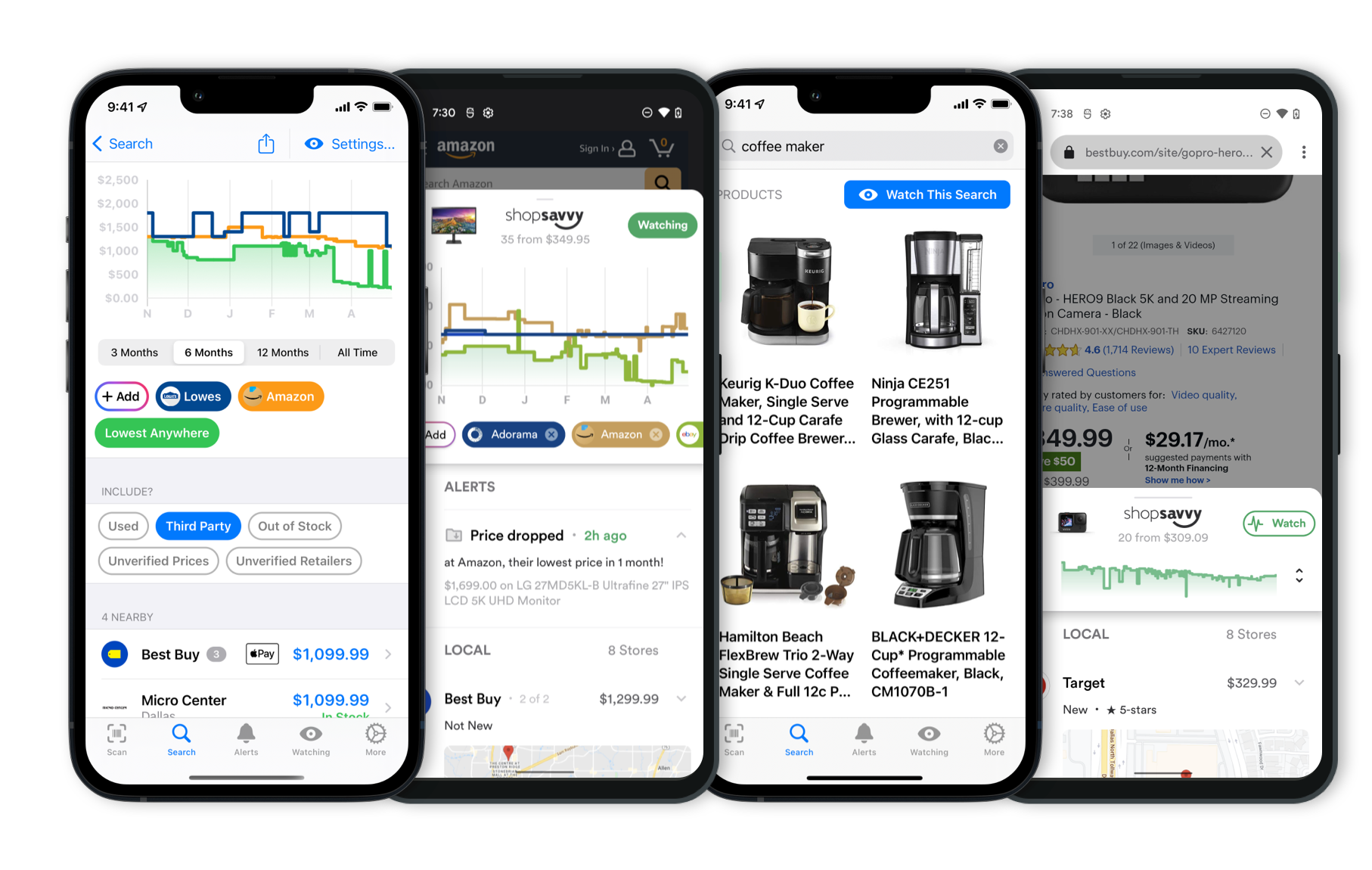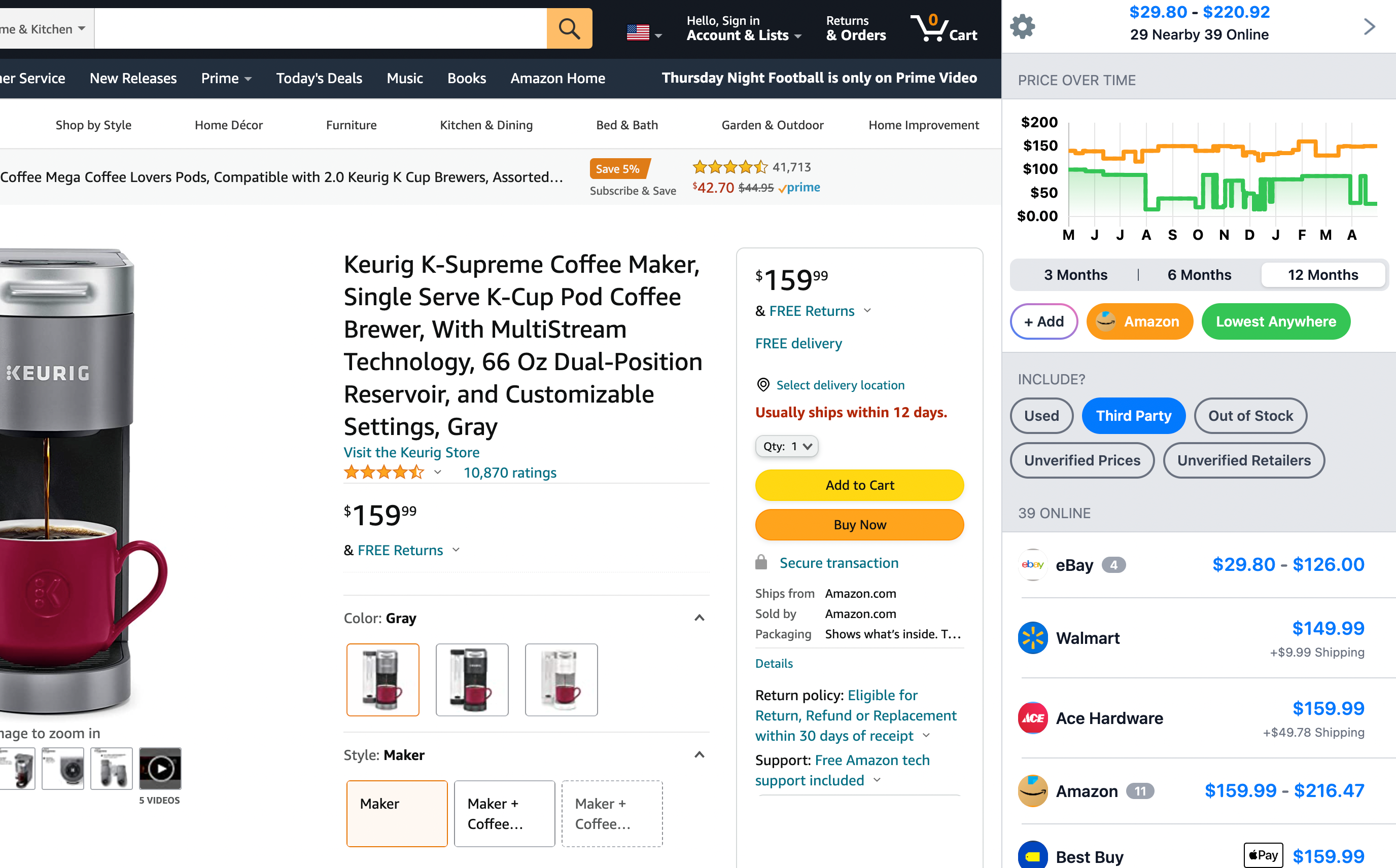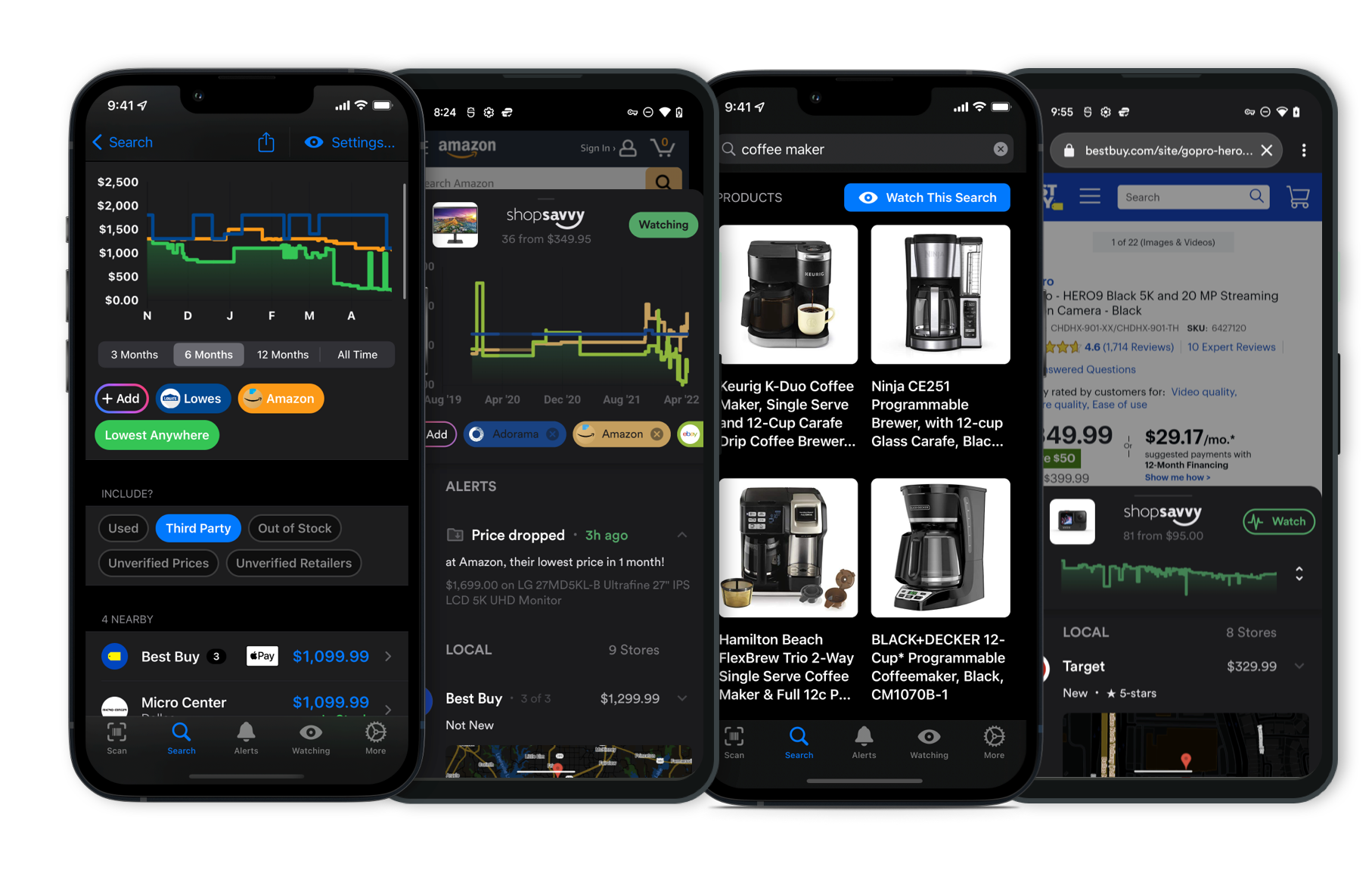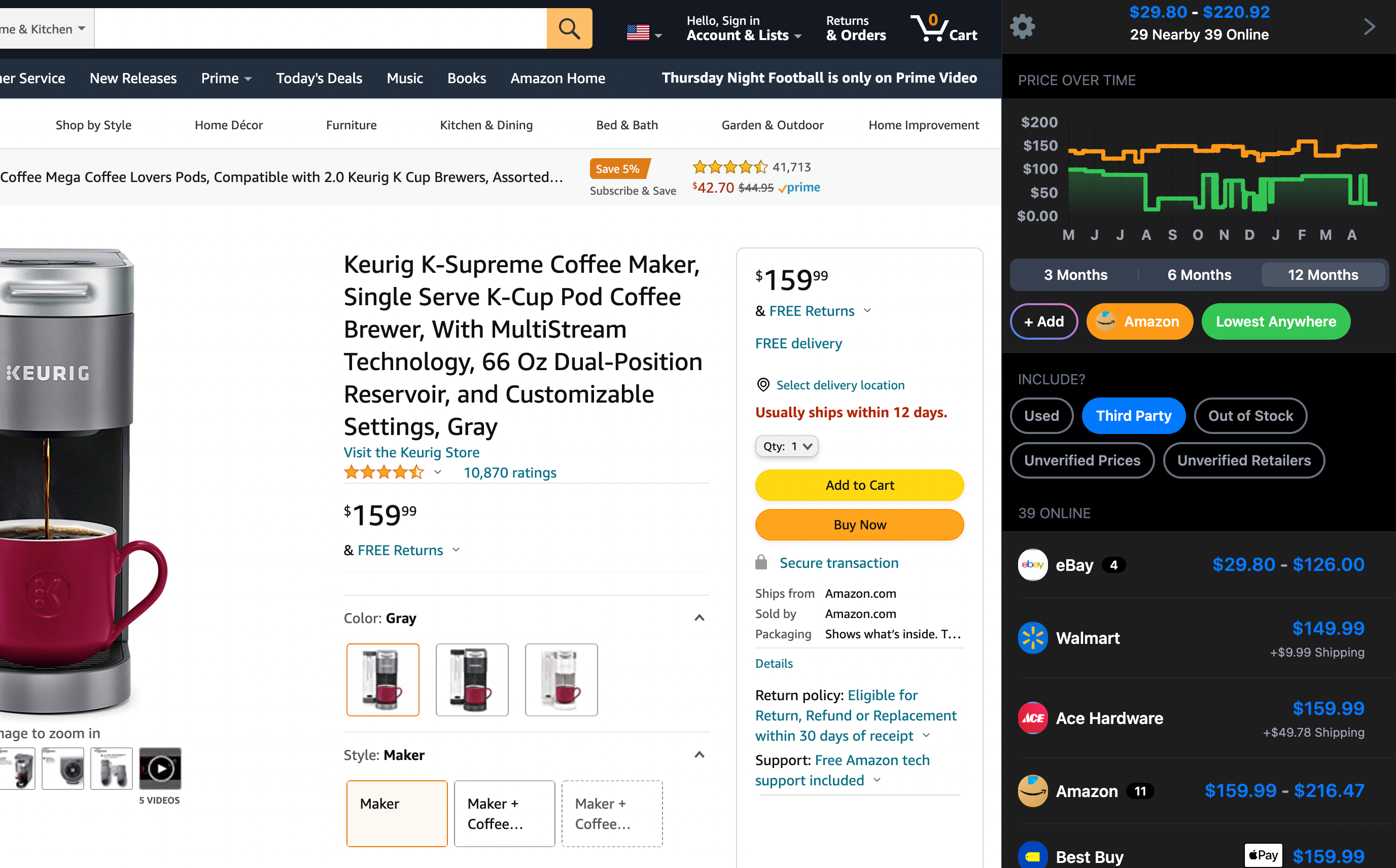Latest Answers - Page 229
The Weego 44S Jump Starter is made to help you jump-start cars with gasoline engines up to 7 liters and diesel engines up to 3.5 liters. It's pretty powerful, with 2100 peak amps and 440 cranking amps, according to the manufacturer's product description.
Let's dive into how long it holds a charge and what to expect in terms of performance.
Battery Longevity and Charging
From what we've gathered, the Weego 44S can hold a charge for about a year when it's not in use, which is pretty good. That being said, it's a smart idea to check the charge every 3-6 months, especially if you keep it in places with fluctuating temperatures.
Keeping it topped off means you're always ready for an emergency.
User Experiences
A lot of people have had good experiences with the Weego 44S. Many have mentioned that it gets their car started right away, even when the car battery is flat. It’s also easy to use, so you don’t need to fuss with jumper cables or have much technical know-how.
But, it’s not all perfect. Some folks have said they had trouble starting their engines in very cold weather or when the battery was completely dead. Like, one person mentioned it wouldn’t start their car at 33°F, and another said it couldn’t handle their bigger truck’s dead battery.
Professional Insights
Professionals also think the Weego 44S is a solid performer. They like its compact design and features like the Smarty Clamps, which help you avoid connecting it wrong.
They also suggest you keep it charged, especially if it's really cold out, to make sure it works when you need it.
Final Thoughts
Overall, the Weego 44S is reliable for most regular cars and pretty easy to use. But, if you're often in freezing climates or have a car with a completely dead battery, you might want to look at something with a bit more power or be extra diligent about keeping it charged.
Hope this helps you figure out if the Weego 44S is right for you! Safe travels!
When comparing the Cuisinart CJE-1000 Juice Extractor with Breville juicers, you'll want to consider things like noise, performance, and ease of use. Here's a quick rundown based on what we've found:
Noise Level:
The Cuisinart CJE-1000 is notably quieter than many other centrifugal juicers. It runs at around 85dB, which is pretty average but generally less noisy compared to some other models. People often mention it operates quietly, even with a powerful 1000-watt motor.
Just keep in mind, it's still going to make some noise with tougher produce like carrots. Breville juicers, such as the Juice Fountain Plus, are also praised for being efficient and relatively quiet, though some of their high-speed models can get pretty loud.
Performance and Efficiency:
The Cuisinart CJE-1000 packs a punch with its 1000-watt motor and 5-speed control, giving you options for different kinds of fruits and veggies. It also has a large 3-inch feed chute, which means less chopping for you.
Breville juicers like the Juice Fountain Elite and Juice Fountain Plus offer similar robust performance, with wide feed chutes and efficient juice extraction capabilities.
Ease of Use and Cleaning:
Both Cuisinart and Breville do a good job with user-friendly designs. The Cuisinart CJE-1000 has a handy snap-up spout to prevent drips and a foam-reducing filter basket, making it easier to juice and clean up.
Many folks mention it's simple to put together and take apart for cleaning. Breville juicers are also known for their straightforward assembly, and most parts are dishwasher safe, which is a huge plus.
Durability and Build Quality:
Durability is key, and the Cuisinart CJE-1000 doesn't disappoint with its die-cast and stainless-steel housing. People seem pretty happy with how it holds up over time.
Breville juicers are also built to last, often featuring stainless-steel components that add to their durability.
Price Point:
If you're watching your budget, the Cuisinart CJE-1000 tends to be more wallet-friendly compared to some Breville models.
While Breville juicers can be on the pricier side, many feel the extra features and build quality are worth the investment.
In a nutshell, both Cuisinart and Breville have excellent juicers. The Cuisinart CJE-1000 is quieter and a bit cheaper, while Breville juicers are known for their outstanding performance and durability.
Which one to go for really depends on what you're looking for in a juicer.
From what we've found, the pulp from the Cuisinart CJE-1000 is generally pretty dry.
This means it does a good job at squeezing out juice from fruits and veggies, so less is wasted. People often mention that it works really well with harder produce like apples and carrots, leaving the pulp nice and dry.
On the other hand, if you're juicing something softer or leafy greens, the pulp might be a bit wetter.
But overall, if you're aiming to get the most juice with minimal waste, this juicer seems to be a good bet.
The Cuisinart CJE-1000 juicer does a pretty good job when it comes to noise. From what we've found, it's quieter than a lot of other high-power juicers out there.
It's got a strong 1000-watt motor, but Cuisinart used some noise-reduction tech to keep things relatively peaceful.
Of course, no juicer is completely quiet, and the noise can vary depending on what you're juicing.
Still, you can generally expect it to be on the quieter side, which is nice if you're juicing early in the morning or late at night and don't want to wake anyone up.
Yeah, cleaning the Cuisinart CJE-1000 is pretty easy.
From what we've found, a lot of people mention that taking it apart is simple, which makes cleaning less of a hassle. Most of the parts can go in the dishwasher, which is a big plus.
The manufacturer also includes a cleaning brush to help with any stubborn pulp left behind.
All in all, if you don't want to spend a ton of time cleaning up, this juicer seems like a good bet.
The Cuisinart CJE-1000 can juice leafy greens, but here are a few things to keep in mind. Based on our research, it's not the top performer for greens like spinach, kale, or wheatgrass. Centrifugal juicers, in general, tend to struggle with these because they aren’t as efficient at extracting juice compared to masticating juicers.
So, you might find that the yield is a bit low, and the pulp comes out wetter than you'd hope, meaning not all the juice gets extracted. This can be a letdown if leafy greens are a big part of your juicing routine. That said, the CJE-1000 can still handle greens, but you might need to run them through a couple of times to get a decent amount of juice.
Mixing them with more watery fruits or veggies like apples or cucumbers can also help with the yield.
The machine's 1000-watt motor does provide strong, consistent power, so it gets through tougher produce pretty quickly. But, be aware, it does get noisy, around 85 dB, which is about as loud as a hair dryer. Nothing unusual for a centrifugal juicer, but worth noting if you prefer a quieter kitchen.
So, while the CJE-1000 isn't perfect for leafy greens, it's still pretty versatile for a variety of fruits and veggies. If leafy greens are your main focus, though, a masticating juicer might be a better choice.
Yeah, the VIOFO A229 Pro is pretty easy to install and set up. Based on our research, most folks found the whole process fairly straightforward, even if they're not super tech-savvy. Here's a quick rundown of what's involved:
Installation Process
-
Mounting the Dash Cam: It comes with adhesive mounts. Just stick it to your windshield, ideally right below the rearview mirror.
-
Connecting the Power: You can use the power cable to plug it into your car's cigarette lighter. If you want a cleaner setup, you can hardwire it using VIOFO's optional HK4 ACC hardwire kit. This is handy for features like parking mode.
-
Installing the Rear Cam (if you have it): If you've got the dual-camera version, you'll also need to mount the rear camera. It's pretty similar to installing the front one, and you just run the included cable between the two.
Setup Process
-
Configuring Settings: Once everything's in place, just start your car to power it up. The cam has a user-friendly screen where you can tweak settings like resolution, loop recording, and parking mode.
-
Parking Mode: According to the manufacturer's description, this cam has three parking modes: Auto Event Detection, Low Bitrate Recording, and Time Lapse. You'll need that HK4 ACC hardwire kit for continuous power to use these features when your car's off.
User Feedback
From what we've gathered, many folks have had positive experiences with the installation. They appreciate the detailed instructions and say the adhesive mounts are solid.
Some did mention that planning out your cable routing ahead of time can make things smoother.
Other Tips
-
Test Before Finalizing: It’s a good idea to test the camera's angle before sticking it down for good. That way, you get the best view.
-
Cable Management: Cable clips or ties can help keep things tidy and prevent any obstructions.
All in all, if you follow the guidelines and take your time, you'll likely find the VIOFO A229 Pro easy to get up and running.
The parking mode on the VIOFO A229 Pro works pretty well, especially if you need solid surveillance for your parked car. According to our research, it offers different parking modes to suit various needs. One standout feature is the buffered parking mode, which records a few seconds before and after any motion or impact. That's super handy for getting a clearer picture of what happened around your car during an incident.
The camera has motion and impact detection, ensuring it captures significant activities like break-ins or hit-and-runs. The manufacturer also lists a time-lapse recording feature. This lets you record continuously at a lower frame rate to save space on your memory card while still keeping an eye on things over a long period.
However, keep in mind that for the best performance, you'll need some extra gear. Hardwiring the dash cam to your car battery or using an external battery pack is necessary for all the parking mode features to work properly.
The manufacturer mentions that the A229 Pro supports a 5GHz WiFi connection with the VIOFO app, allowing you to tweak settings and review footage from your phone. Just note that while you can set up and check the camera through the app, it doesn't support continuous live viewing remotely when parked.
In general, the parking mode features on the VIOFO A229 Pro are quite solid if you have the right setup. Our research suggests these features give a lot of peace of mind for long-term parking. Just make sure you have the necessary accessories to get the most out of it.
Hey, I get your concern about the VIOFO A229 Pro overheating.
Based on what we've found, the dash cam does have a few features aimed at managing heat. The manufacturer doesn't specifically mention overheating in their product description, but they do highlight its robust build and quality components, which should help with heat dissipation.
From what we've gathered, the A229 Pro generally handles heat well during normal use. Some folks have mentioned it gets warm, especially in really hot climates or during long recording sessions, but it doesn't seem to get hot enough to malfunction.
To keep it running smoothly, the manufacturer suggests using VIOFO's industrial high endurance microSD cards. These are designed for continuous video recording and can reduce heat-related issues.
Placement also matters, so setting it up in a well-ventilated spot in your car can help. And don't forget to keep the firmware updated—those updates often include improvements for things like heat management.
So, while it's not invincible to overheating, the VIOFO A229 Pro seems pretty solid in managing heat if you follow some simple tips.
When it comes to the VIOFO A229 Pro and its ability to record continuously, it seems pretty solid based on what we found. The dash cam is praised for its consistent performance and ability to keep recording without interruptions, which many people find reassuring, especially on long drives or during daily commutes.
Here's a bit more detail on why it holds up well:
Stable Performance: Our research shows that the VIOFO A229 Pro does a great job during extended recording sessions. Folks have pointed out that it reliably captures high-quality footage without randomly stopping.
Smart Storage Management: It uses loop recording to manage storage efficiently, so when the SD card fills up, it just overwrites the oldest footage. This means you always get the most recent events without having to worry about running out of space.
Clear Video Quality: The 4K HDR recording is another highlight—users appreciate the clear and detailed images, whether it's bright daylight or low-light conditions. This clarity helps ensure important details like license plates and road signs are captured well.
Dependable Power Supply: The A229 Pro uses a supercapacitor instead of a regular battery, which handles extreme temperatures better and provides a steadier power source. This helps prevent any unexpected shutdowns due to power issues.
Software Updates: According to the manufacturer's description, they provide regular firmware updates to fix bugs and improve performance. These updates help keep the dash cam reliable over time.
Positive Experiences: From what we've seen, many users have had good experiences with its continuous recording. They've highlighted its ability to run smoothly without frequent crashes or errors, which is a big plus for dependability.
So, in a nutshell, based on everything we've looked at, the VIOFO A229 Pro seems to be a reliable dash cam when it comes to continuous recording. Its stable performance, smart storage, clear video, reliable power, and ongoing updates all contribute to its dependability.
 Download ShopSavvy App
Download ShopSavvy AppCompare prices for anything in real-time, set price alerts, watch for deals by keyword, and much more
 Install ShopSavvy Browser Extension
Install ShopSavvy Browser ExtensionCompare and track prices automatically while you shop online at thousands of websites.
🔥 Trending Deals
Loading trending deals...
Footer 1
Subscribe for Updates
Get the latest news, and updates on ShopSavvy. You'll be glad you did!




